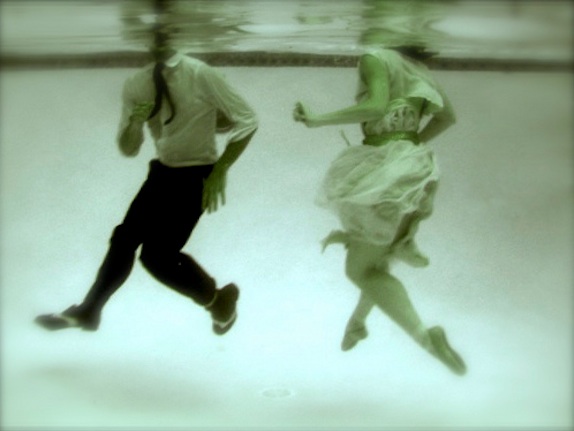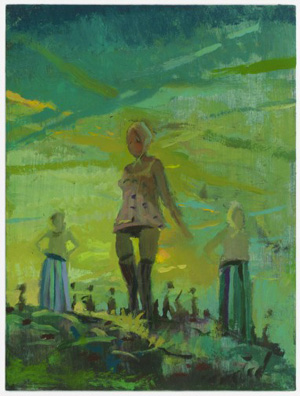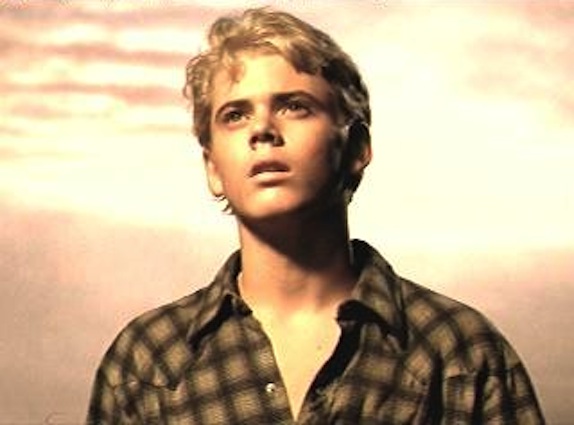If someone asked you to picture a philanthropist,Dear Utol: Catfish Episode 46 chances are a billionaire like Bill Gates or John D. Rockefeller Sr. would come to mind. But not all philanthropists are billionaires, or even millionaires for that matter. People who make modest gifts of time or money can make a big difference in their communities.
We are professors who teach and do research about philanthropy, the practice of expressing generosity by giving away money and, in some cases, time. We see our job as motivating and preparing college and graduate students to become future leaders of nonprofit organizations or donors with good ideas about how to make a difference — starting right now.
One approach, known as "experiential philanthropy," teaches about charitable giving through hands-on experiences. Students get real money, typically about $10,000 USD per class, to give away to local nonprofits. One of us (David) has determined that these courses are being taught on more than 80 different campuses.
Northern Kentucky University pioneered this approach in 1999. Since then, students there have collectively awarded more than $1.5 million to local charities as part of their coursework.
SEE ALSO: Millions of refugees could benefit from big data — but we're not using itA wealthy donor, Geoffrey P. Raynor, is building on that model through the Philanthropy Lab. So far, this national initiative has spread to more than 20 universities, including many attended by the nation’s richest students, such as Princeton and the University of Chicago.
These courses are for all students, however. Undergraduates majoring in everything from chemistry to philosophy and business to history can enroll. While some of them are or want to become rich, others do not come from wealth or aspire to become upper-class. All of them sign up because they want to learn how to use their money and time to make change on the issues they care most about.
 Credit: Peter Dazeley / Photographer's Choice / Getty Images
Credit: Peter Dazeley / Photographer's Choice / Getty Images Giving away money — particularly when it's not yours — can be fun. But does it actually teach students anything about philanthropy or how to become philanthropists?
To find out, one of us (Lindsey) led a study published in Nonprofit and Voluntary Sector Quarterlythat surveyed more than 600 Northern Kentucky University students who had taken an experiential philanthropy course there from 2009 to 2013.
The research team found that students were more interested in donating to and volunteering at local nonprofits after taking the course. They were also more likely to know more about issues affecting their community and what nonprofits were doing about them.
Our findings suggest that by studying — and actually engaging in — philanthropy, students learn more about what philanthropy is, why they should do it, and how they can make a difference.
While the logic behind these programs may be clear, the question of where the money students give away comes from is not, because it’s not something covered in a traditional university budget.
So far, foundations like the Learning by Giving Foundation, founded by philanthropist Doris Buffett – Warren Buffett's sister – and the Once Upon a Time Foundation, funded by the same person as the Philanthropy Lab, are a leading source of financial support.
Doris Buffett's Learning by Giving Foundation funds undergraduate courses at colleges and universities across the country that offer for-credit courses combining the study of theory with the practice of philanthropy.The federal government has also pitched in to support a program called Pay it Forward, which engages college students in hands-on philanthropy, grant-making, and volunteer service. However, Congress abolished that funding in 2011. Its courses are being taught today only in Ohio, where local foundations foot the bill, at campuses like Denison University, Ohio State University-Newark, Central Ohio Technical College, and the University of Cincinnati.
"After learning through these hands-on philanthropic experiences, students often want to donate their own money to nonprofits."
Cutting these programs means that young people will be less likely to be able to take philanthropy courses in college. This is troubling, because one of us (Jodi) found that after having opportunities to be actively engaged in giving with a group of peers, young people can better understand philanthropy's impact.
That's because after learning through these hands-on philanthropic experiences, students often want to donate their own money to nonprofits.
Many other kinds of courses about philanthropy and nonprofits are taught at U.S. and foreign universities. But experiential philanthropy is different because students gain practical knowledge and skills. Whether a class gives away $200 or $2,000, they become equipped for future leadership in the charitable world.
Education is, to a degree, about investing in the potential of students. And philanthropic education gets students to think about their responsibilities to invest in the communities in which they live. It helps them see the power they have to make a difference.
Jodi Benenson is Assistant Professor, School of Public Administration, University of Nebraska Omaha.
David Campbell is Associate Professor of Public Administration, Binghamton University, State University of New York.
Lindsey McDougle is Assistant Professor, School of Public Affairs and Administration (SPAA), Rutgers University-Newark.
Topics Activism Social Good Innovations
 Best Samsung Frame deal: Free Music Frame with Frame Pro art TV purchase
Best Samsung Frame deal: Free Music Frame with Frame Pro art TV purchase
 Twitter keeps logging you out? What we know
Twitter keeps logging you out? What we know
 'Godfather of AI' has quit Google to warn people of AI risks
'Godfather of AI' has quit Google to warn people of AI risks
 Here are the 13 best tweets of the week
Here are the 13 best tweets of the week
 NYT Strands hints, answers for May 2
NYT Strands hints, answers for May 2
 Staff Picks: ‘The Duel,’ An Annotated ‘Peter Pan’ by The Paris Review
Staff Picks: ‘The Duel,’ An Annotated ‘Peter Pan’ by The Paris Review
 Best yoga apps and YouTube channels for practicing at home
Best yoga apps and YouTube channels for practicing at home
 Love Stories by Phoebe Connelly
Love Stories by Phoebe Connelly
 Whale Vomit Episode 5: Startup Monarchy
Whale Vomit Episode 5: Startup Monarchy
 Staff Picks: Barbie's Dream House, All the Single Ladies by The Paris Review
Staff Picks: Barbie's Dream House, All the Single Ladies by The Paris Review
 Amazon requires sellers to use more efficient packaging, or pay up
Amazon requires sellers to use more efficient packaging, or pay up
 Kanye West claims he's running for president and Elon Musk is playing along
Kanye West claims he's running for president and Elon Musk is playing along
 Best yoga apps and YouTube channels for practicing at home
Best yoga apps and YouTube channels for practicing at home
 Screen Shots by Liz Brown
Screen Shots by Liz Brown
 Best robot vacuum deal: Get the Roborock Q5 Max for 53% off at Amazon
Best robot vacuum deal: Get the Roborock Q5 Max for 53% off at Amazon
 The 27 Guy Fieriest Guy Fieri tweets of 2020, so far
The 27 Guy Fieriest Guy Fieri tweets of 2020, so far
 Cycling; Second
Cycling; Second
 Wordle today: Here's the answer and hints for May 2
Wordle today: Here's the answer and hints for May 2
 New panda mom doesn't know she has twins thanks to sneaky zookeepers
New panda mom doesn't know she has twins thanks to sneaky zookeepers
 The Winter Issue: Naughty and Nice by The Paris Review
The Winter Issue: Naughty and Nice by The Paris Review
Yelp reviewers are spamming Trump hotels with "shithole" reviewsApple redesigns its online store, makes it more like the iOS app'Clifford' delayed as COVID threatens Hollywood's comebackHow to worm your way into Trump's inner circle (Hint: Red and pink Starbursts)Square will acquire buyChrissy Teigen tweets about Donald Trump and Tide podsKim Kardashian and Kanye West welcome a baby girlA new book about Tesla is already causing dramaHeatworks' Tetra counterA working prototype of Apple's AirPower mat is out in the wild'#MeToo, Now What?' asks where we go from here in a fiveNASA took its first drive on the moon 50 years agoGalactic siblings fight in vivid NASA Hubble imageA bunch of truly annoyed cats (and one sad chug) looking sharp on Dress Up Your Pet DaySomeone actually said 'Gucci Gang' a million times for charity because this is 2018Apple's Magic Keyboard with Touch ID is now available on its ownFunnel web spider egg sack opens in upTaylor Swift drops cryptic 'Red' video, unscrambling chaos ensuesWoman pretends to give birth to her kitten in hilariously weird cat maternity photo shootStudies show banned content is still thriving on social platforms Dwayne Johnson has us scratching our heads over his emoji opinions You can now spend $10,000 on a bikini made of pizza Lenovo made a camera specifically for YouTube's VR180 format Cubs player swears he didn't actually flip off Donald Trump in that viral photo Party, down: Fyre Festival founder Billy McFarland arrested and charged with wire fraud Lightyear One solar Notorious B.I.G.'s mom accuses Kendall and Kylie of cultural appropriation after T The 8 best new Photos features in MacOS High Sierra People are in mourning that China pulled a cult Netflix show after just 3 episodes Facebook News Feed change cracks down on spam and fake news Fan shares 'handwritten letter' from Adele hinting she'll never tour again Die hard Miami fan displays romance by getting married wearing Dolphins helmet NASA has better things to do than address Mars conspiracy theories Ron Howard's first Han Solo set photo is utterly Star Wars pun Internet tax is real and I have been paying it for years, by Jeff Bezos Finally we know how much coffee each 'Friends' character drank Annie Lennox shares spectacularly cringeworthy email from 'new music coordinator' For some reason, Katy Perry is really craving Australian meat pies Man caught in hilariously awkward situation on Snap Maps Toyota's new robot is a gentle, helpful companion for paralyzed veteran
2.3418s , 10133.75 kb
Copyright © 2025 Powered by 【Dear Utol: Catfish Episode 46】,Miracle Information Network